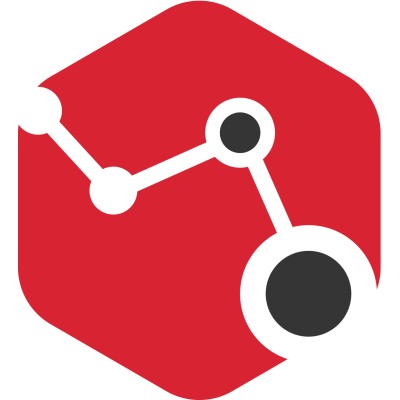Navigating the New Landscape of Governance, Risk, and Compliance in 2025
January 24, 2025, 5:15 am

Location: India, Karnataka, Bengaluru
Employees: 11-50
Founded date: 2017
Total raised: $30.85M

Location: United States, Massachusetts, Boston
Employees: 501-1000
Founded date: 2016
Total raised: $576M
In the world of business, Governance, Risk, and Compliance (GRC) is no longer a mere checkbox. It’s the backbone of operational excellence. As we step into 2025, organizations are shifting gears. They are no longer viewing GRC as a burden but as a catalyst for growth. This transformation is driven by increased regulatory demands and the need for robust risk management.
Hyperproof’s recent report highlights this shift. It surveyed 1,000 IT and GRC professionals, revealing a landscape ripe for change. A staggering 91% of respondents now have centralized teams managing GRC. This is the highest percentage recorded in six years. It signals a collective realization: GRC is essential for strategic success.
The report also shows that 72% of organizations plan to expand their compliance teams this year. Budgets are increasing too, with 63% of respondents expecting a rise in GRC funding over the next 12 to 24 months. This is not just a trend; it’s a movement towards maturity in GRC practices.
The data tells a compelling story. Organizations that manage IT risk in silos are more vulnerable. In 2024, 60% of these companies experienced data breaches. In contrast, only 41% of those using integrated GRC tools faced similar issues. This stark difference underscores the importance of a cohesive approach to risk management.
Moreover, 59% of respondents now test all controls, not just the critical ones. This marks a 26% increase year-over-year. It reflects a growing understanding that comprehensive testing is vital for resilience. The use of a Common Controls Framework (CCF) is also on the rise, with 55% of organizations adopting this best practice. It streamlines GRC processes and enhances efficiency.
Collibra, another key player in the GRC space, is making waves with its recent achievements. The company has secured ISO 42001 certification for AI governance. This is a significant milestone, as it’s the first third-party certification of its kind. It assures clients that Collibra adheres to the highest standards of security and compliance.
Collibra’s commitment doesn’t stop there. The company has signed the European Commission’s AI Pact, aligning itself with global regulatory frameworks. This voluntary initiative aims to promote trustworthy AI practices. As the EU AI Act approaches full enforcement in August 2026, Collibra is positioning itself as a leader in AI governance.
To further support organizations, Collibra has launched the EU AI Act Assessment Tool. This tool helps businesses navigate the complexities of compliance. It streamlines the process, allowing organizations to assess their adherence to the Act’s requirements efficiently. This proactive approach is crucial as companies prepare for the evolving regulatory landscape.
The intersection of GRC and AI governance is becoming increasingly important. As organizations adopt AI technologies, the need for transparency and accountability grows. Collibra’s initiatives reflect a broader trend in the industry. Companies are recognizing that responsible AI deployment is essential for building trust.
In this new era, GRC is not just about compliance; it’s about creating a competitive advantage. Organizations are beginning to see the value in proactive risk management. They understand that a mature GRC framework can drive operational excellence and strategic growth.
The findings from Hyperproof and Collibra illustrate a pivotal moment in the GRC landscape. Companies are no longer treating compliance as a cost center. Instead, they are investing in GRC as a strategic asset. This shift is reshaping how organizations approach risk management.
As we look ahead, the focus on GRC maturity will only intensify. Organizations will continue to seek integrated solutions that enhance their resilience. The demand for centralized GRC teams will grow, as will the need for robust compliance resources.
In conclusion, the landscape of Governance, Risk, and Compliance is evolving. Organizations are moving away from viewing GRC as a checkbox exercise. They are embracing it as a vital component of their strategic framework. With increased regulatory demands and the rise of AI, the need for effective GRC practices has never been more critical. The future belongs to those who recognize this shift and adapt accordingly. The journey towards GRC maturity is just beginning, and the opportunities are vast.
Hyperproof’s recent report highlights this shift. It surveyed 1,000 IT and GRC professionals, revealing a landscape ripe for change. A staggering 91% of respondents now have centralized teams managing GRC. This is the highest percentage recorded in six years. It signals a collective realization: GRC is essential for strategic success.
The report also shows that 72% of organizations plan to expand their compliance teams this year. Budgets are increasing too, with 63% of respondents expecting a rise in GRC funding over the next 12 to 24 months. This is not just a trend; it’s a movement towards maturity in GRC practices.
The data tells a compelling story. Organizations that manage IT risk in silos are more vulnerable. In 2024, 60% of these companies experienced data breaches. In contrast, only 41% of those using integrated GRC tools faced similar issues. This stark difference underscores the importance of a cohesive approach to risk management.
Moreover, 59% of respondents now test all controls, not just the critical ones. This marks a 26% increase year-over-year. It reflects a growing understanding that comprehensive testing is vital for resilience. The use of a Common Controls Framework (CCF) is also on the rise, with 55% of organizations adopting this best practice. It streamlines GRC processes and enhances efficiency.
Collibra, another key player in the GRC space, is making waves with its recent achievements. The company has secured ISO 42001 certification for AI governance. This is a significant milestone, as it’s the first third-party certification of its kind. It assures clients that Collibra adheres to the highest standards of security and compliance.
Collibra’s commitment doesn’t stop there. The company has signed the European Commission’s AI Pact, aligning itself with global regulatory frameworks. This voluntary initiative aims to promote trustworthy AI practices. As the EU AI Act approaches full enforcement in August 2026, Collibra is positioning itself as a leader in AI governance.
To further support organizations, Collibra has launched the EU AI Act Assessment Tool. This tool helps businesses navigate the complexities of compliance. It streamlines the process, allowing organizations to assess their adherence to the Act’s requirements efficiently. This proactive approach is crucial as companies prepare for the evolving regulatory landscape.
The intersection of GRC and AI governance is becoming increasingly important. As organizations adopt AI technologies, the need for transparency and accountability grows. Collibra’s initiatives reflect a broader trend in the industry. Companies are recognizing that responsible AI deployment is essential for building trust.
In this new era, GRC is not just about compliance; it’s about creating a competitive advantage. Organizations are beginning to see the value in proactive risk management. They understand that a mature GRC framework can drive operational excellence and strategic growth.
The findings from Hyperproof and Collibra illustrate a pivotal moment in the GRC landscape. Companies are no longer treating compliance as a cost center. Instead, they are investing in GRC as a strategic asset. This shift is reshaping how organizations approach risk management.
As we look ahead, the focus on GRC maturity will only intensify. Organizations will continue to seek integrated solutions that enhance their resilience. The demand for centralized GRC teams will grow, as will the need for robust compliance resources.
In conclusion, the landscape of Governance, Risk, and Compliance is evolving. Organizations are moving away from viewing GRC as a checkbox exercise. They are embracing it as a vital component of their strategic framework. With increased regulatory demands and the rise of AI, the need for effective GRC practices has never been more critical. The future belongs to those who recognize this shift and adapt accordingly. The journey towards GRC maturity is just beginning, and the opportunities are vast.

